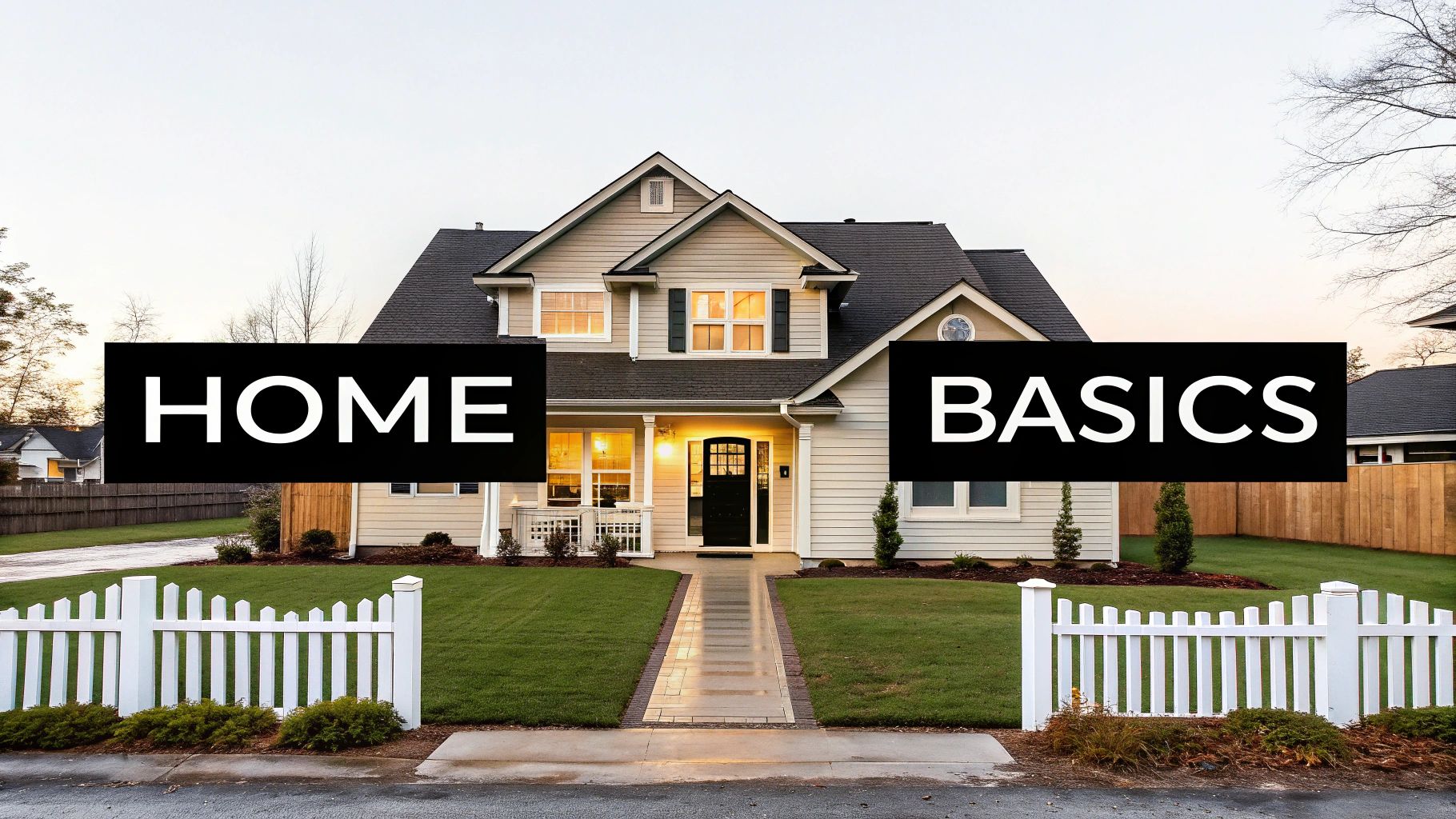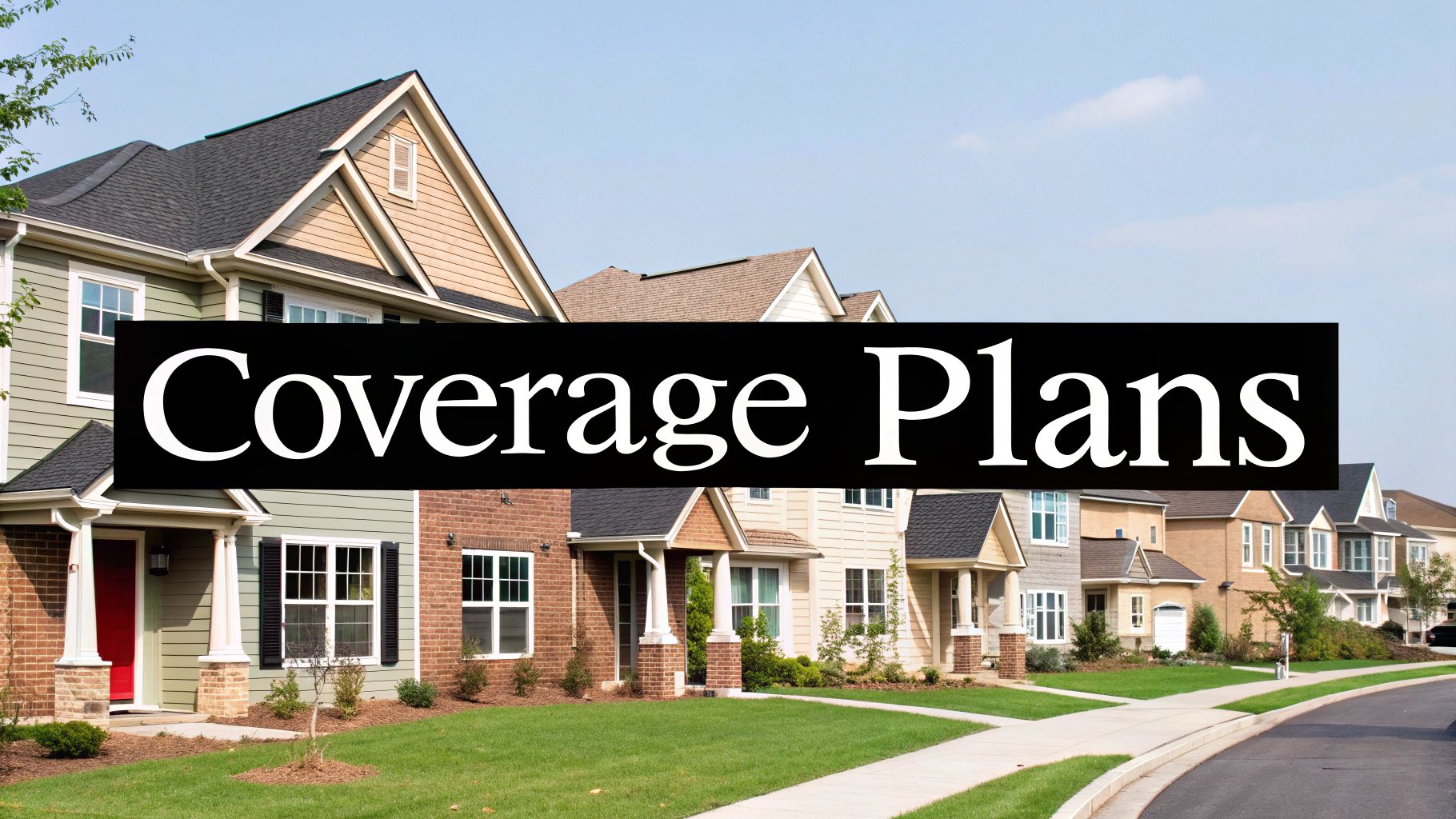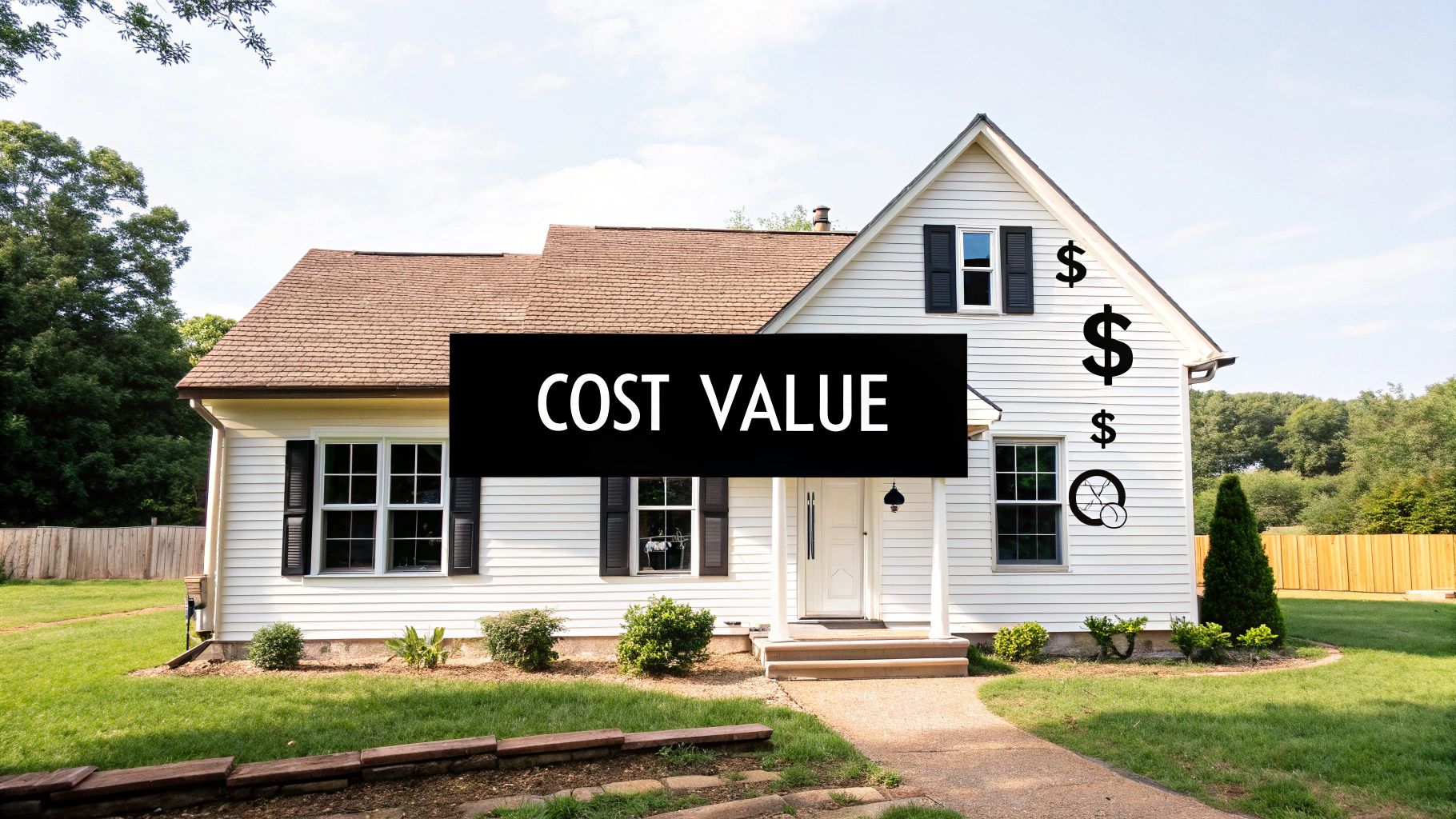The Real Value of Homeowners Insurance Protection

For many, a home is their largest single investment. Protecting that investment is crucial, and that's the role of homeowners insurance. It's not just another bill; it's a critical safeguard against financial hardship. Understanding its value becomes clear when we consider the potential consequences of not having it.
Financial and Legal Protection
Imagine a devastating fire destroying homes in your neighborhood. Without insurance, rebuilding your life becomes a monumental financial burden, potentially taking years to recover from. Homeowners insurance acts as a safety net, providing funds for repairs or rebuilding after covered events like fire, windstorms, or theft. It also offers liability coverage, protecting you if someone is injured on your property and files a lawsuit. This can prevent costly legal battles and potential financial ruin.
For instance, if a tree falls on your neighbor's house during a storm, your homeowners insurance might cover the damage. If a guest slips and falls in your home, your liability coverage could help with their medical expenses and shield you from lawsuits. This protection goes beyond physical property. Homeowners insurance often covers additional living expenses, helping to pay for temporary housing, meals, and other essential costs if your home becomes uninhabitable due to a covered incident.
Homeowners insurance offers significant financial protection for homeowners worldwide. The global home insurance market, valued at USD 237.7 billion in 2021, is expected to reach USD 417.66 billion by 2030. In the U.S., over 81% of Americans view home insurance as essential for protecting their investments. Find more detailed statistics here. This data underscores the increasing recognition of insurance as a key component of financial security. This leads us to an important question: is homeowners insurance truly optional?
Addressing Misconceptions About Insurance
Many believe they only need insurance if they live in a high-risk area. However, unforeseen events can happen anywhere. A burst pipe can cause substantial water damage, regardless of location. Even a seemingly minor incident, like a guest injuring themselves on your property, can result in a costly lawsuit.
Homeowners insurance provides protection against these unexpected circumstances. It offers peace of mind, knowing you have financial support to rebuild and recover from whatever may come. This brings us to the practical matter of the various coverage options available to meet individual needs.
Decoding Your Policy: What's Actually Covered

Understanding what your homeowners insurance actually covers is crucial. It goes beyond a general sense of protection, addressing specific areas and situations within a standard policy. This knowledge empowers homeowners to evaluate their risks and make informed decisions.
Dwelling Coverage: Protecting the Structure of Your Home
Dwelling coverage safeguards the physical structure of your home. This includes the walls, roof, and attached structures like garages. If your home is damaged by a covered peril—such as fire, wind, or hail—your insurance will help pay for the necessary repairs.
For instance, if a fire damages your kitchen, dwelling coverage would contribute to rebuilding the affected area. This coverage is fundamental to most homeowners insurance policies, forming the basis of protecting your investment.
Personal Property Coverage: Protecting Your Belongings
Your homeowners policy protects more than just the structure of your house; it also covers the belongings inside. Personal property coverage protects your furniture, electronics, clothing, and other possessions from covered perils.
If your belongings are stolen during a burglary or damaged in a fire, your insurance can help replace or repair them. This coverage extends beyond your home's walls, often covering belongings damaged or lost while you are traveling. Understanding the scope of personal property coverage is key to grasping your policy's full value.
Liability Coverage: Protection From Lawsuits
Liability coverage is another essential component of homeowners insurance. It protects you financially if someone is injured on your property and decides to sue. This coverage can help pay for medical expenses, legal fees, and any resulting judgments against you.
Consider a scenario where a delivery driver slips and falls on your icy driveway. Your liability coverage would help protect you from the financial ramifications of such an incident. Understanding potential liabilities is crucial. Property Manager Liability Insurance offers further insights into this type of coverage.
Additional Living Expenses (ALE): Maintaining Your Lifestyle During Displacement
Homeowners insurance also considers the disruption to your life that a covered peril can cause. Additional living expenses (ALE) coverage helps pay for temporary housing, meals, and other essential living costs if your home becomes uninhabitable due to a covered event.
Imagine a burst pipe floods your home, making it unlivable for weeks during repairs. ALE coverage would help cover the costs of a hotel or rental property, ensuring you have a place to stay. This often-overlooked benefit can significantly ease the financial burden of displacement.
To understand the significance of comprehensive coverage, consider some key statistics. The Insurance Information Institute reports that only 47% of homeowners create a home inventory. As of 2021, approximately 5.3% of insured homes filed claims, primarily for property damage. These figures underscore the importance of homeowners insurance, which covers both physical property and provides liability protection. Learn more about home insurance statistics: https://www.iii.org/fact-statistic/facts-statistics-homeowners-and-renters-insurance.
To help you understand your coverage better, here's a table summarizing key components:
Standard Homeowners Insurance Coverage Components
| Coverage Type | What It Protects | Typical Coverage Limits | Common Exclusions |
|---|---|---|---|
| Dwelling | The physical structure of your home, including attached structures | Generally 50% to 70% of the home's replacement cost | Floods, earthquakes (often require separate policies), and damage from neglected maintenance |
| Personal Property | Your belongings inside the home, such as furniture, electronics, and clothing | Typically 50% to 70% of the dwelling coverage limit | Certain high-value items like jewelry or art (may require additional coverage), damage from pests, and normal wear and tear |
| Liability | Covers legal and medical costs if someone is injured on your property and sues you | Varies, but typically starts at $100,000 | Intentional acts, business-related activities, and certain dog breeds |
| Additional Living Expenses (ALE) | Pays for temporary housing, meals, and other essential living expenses if your home is uninhabitable due to a covered peril | Usually 20% of the dwelling coverage limit | Costs exceeding the coverage limit and expenses that are not deemed necessary |
This table provides a general overview, and specific coverage limits and exclusions can vary based on your individual policy and insurance provider. Always review your policy documents for detailed information.
Want to delve deeper? This resource provides further insights into homeowners insurance coverage: What Does Homeowners Insurance Really Cover? Find Out Here.
When You Have No Choice: Mandatory Coverage Situations

While securing homeowners insurance often feels like a personal choice, certain circumstances make it a requirement. This section explores those situations where coverage isn't optional, from mortgage lender stipulations to legally mandated protection. Understanding these instances is crucial for safeguarding your investment and fulfilling your obligations.
Mortgage Lender Requirements: Protecting Their Investment
Most mortgage lenders require borrowers to maintain homeowners insurance. This safeguards their financial stake in your property. Your home acts as collateral for your loan. If it's damaged or destroyed, the lender needs assurance that their investment is protected. This requirement isn't about controlling your decisions, but about mitigating risk for all parties involved.
Lenders typically require coverage that matches the replacement cost of your home. This guarantees sufficient funds are available to rebuild if a total loss occurs. Often, they also mandate specific coverage types, such as hazard insurance. This protects against common risks like fire, wind, and hail. This naturally leads us to the importance of understanding the specifics of your lender's requirements.
Understanding Lender-Required Coverage
Carefully review your mortgage agreement to fully grasp your lender's specific insurance stipulations. The required coverage amount might differ from your initial expectations. Some lenders require higher coverage limits for specific risks prevalent in your area, such as flood or earthquake insurance. This is particularly true for homes situated in high-risk zones.
Mandatory Coverage in High-Risk Areas: Protecting Communities
Certain regions, especially those susceptible to natural disasters, legally mandate homeowners insurance. These mandates protect both individual homeowners and the broader community. For instance, in flood-prone areas, mandatory flood insurance helps ensure homeowners can rebuild after a flood without depending solely on government aid. This shared responsibility strengthens the community's resilience in the face of disaster.
Navigating Mandatory Coverage Without Overpaying
Even when homeowners insurance is required, you still have options. Don't simply accept the first policy presented. Compare quotes from multiple insurers, and thoroughly understand the coverage details.
-
Understand the Fine Print: Scrutinize your policy to know exactly what is and isn't covered. Identify exclusions and limitations that could leave you vulnerable. For example, your policy might cover wind damage, but exclude hurricane damage if you're in a hurricane-prone area.
-
Identify Mandatory vs. Recommended Coverage: Lenders may recommend coverage beyond the minimum requirement. Determine which supplemental coverages truly suit your needs and avoid paying for unnecessary protection. Consulting an independent insurance advisor can help you analyze your risks and customize your policy.
-
Review Your Policy Regularly: Your insurance needs change over time. Review your policy annually or after significant life events, like home renovations, to confirm you have adequate coverage that aligns with your current circumstances.
By understanding the complexities of mandatory coverage, you can meet your obligations while making informed decisions about your homeowners insurance and protecting your most valuable asset.
Climate Crisis: How Extreme Weather Is Reshaping Insurance

The homeowners insurance market is facing significant challenges due to the increasing frequency and intensity of extreme weather events. This changing climate is affecting both the availability and affordability of coverage, prompting homeowners to reassess their insurance needs. This begs the question: is homeowners insurance more critical now than ever before?
The Rising Cost of Extreme Weather
Extreme weather events, from wildfires and hurricanes to floods and severe storms, are becoming more prevalent and more expensive. These events result in a surge of insurance claims, ultimately driving up premiums. Insurers are also reevaluating risk in high-risk areas, potentially leading to higher deductibles or even outright denial of coverage.
Some insurers are withdrawing from markets prone to wildfires, making it challenging for homeowners in these regions to find affordable coverage. This is pushing homeowners to explore other avenues to protect their investments.
The U.S. Department of the Treasury's Federal Insurance Office (FIO) highlights these difficulties. Their report indicates that between 2018 and 2022, homeowners insurance premiums increased 8.7% above inflation, reflecting the heightened risk from climate-related events. Non-flood disasters alone accounted for over $609 billion in damages during this period. This data underscores the importance of comprehensive insurance coverage to protect against financial risks associated with homeownership.
Adapting to a Changing Climate
Proactive homeowners are implementing several strategies to mitigate these challenges:
-
Improved Home Resilience: Strengthening homes against extreme weather can reduce insurance premiums. For instance, installing impact-resistant windows or reinforcing roofs can lessen vulnerability to wind and hail damage.
-
Strategic Coverage Decisions: Carefully assessing coverage options and understanding policy exclusions is essential. Homeowners are increasingly seeking policies with specific protections for climate-related risks. Separate flood insurance policies, for example, are becoming a necessity in many areas.
-
Community-Based Initiatives: Some communities are exploring group insurance purchasing or developing programs that incentivize mitigation efforts. This collaborative approach can lower individual costs and bolster community-wide resilience.
To further illustrate the regional impact of climate change on insurance costs, let's examine the following table:
Rising Insurance Costs by Region and Risk Factor
| Region | Average Premium Increase | Primary Risk Factors | Mitigation Strategies |
|---|---|---|---|
| California | 15% | Wildfires, Drought | Community wildfire protection plans, Drought-resistant landscaping |
| Florida | 12% | Hurricanes, Flooding | Elevated construction, Flood-proofing |
| Gulf Coast | 10% | Hurricanes, Storm Surge | Hurricane straps, Seawalls |
| Midwest | 7% | Tornadoes, Severe Storms | Storm shelters, Reinforced roofing |
| Northeast | 5% | Winter Storms, Flooding | Snow load upgrades, Improved drainage |
This table shows how different regions are experiencing varying premium increases driven by unique climate risks. Implementing region-specific mitigation strategies is key to managing these rising costs.
The Future of Homeowners Insurance
The long-term effects of the climate crisis on homeowners insurance are still developing. However, several key trends are emerging:
-
Increased Use of Technology: Insurers are using data and technology, such as weather pattern analysis, to better assess risk and personalize premiums.
-
Focus on Mitigation and Prevention: Incentivizing mitigation efforts is becoming increasingly vital. This could involve premium discounts for homeowners who implement protective measures or resources for community-based mitigation projects.
-
Shifting Risk Assessments: As climate risks change, insurers continually reassess risk zones and coverage options. Homeowners must stay informed about these changes and adjust their coverage as needed. This awareness is crucial when determining the true necessity of homeowners insurance.
Global Perspectives: What We Can Learn From Other Markets
Homeowners insurance in the United States often feels like a uniquely American issue. However, the reality is that homeowners around the world grapple with similar questions of property protection. Exploring how other countries approach this challenge can offer valuable insights for the U.S. market. By looking beyond our borders, we can learn from different models and perhaps identify potential improvements.
European Social Insurance Models
Many European countries weave home insurance into their social safety net programs. This differs significantly from the U.S., which relies primarily on private insurers. These social insurance systems often provide a baseline level of coverage for catastrophic events, while encouraging homeowners to supplement with private policies for more comprehensive protection.
For example, some nations use a combined public-private approach. Government programs cover basic rebuilding costs after events like floods or earthquakes, and private insurers offer additional coverage for personal belongings, liability, and other specific needs.
This blended model offers a balance. It ensures a basic safety net for everyone, yet retains the flexibility of private insurance. However, this approach might also limit individual customization compared to fully privatized systems. Could a similar structure work in the U.S.? It's a complex question that deserves further exploration.
Parametric Insurance in Asia: Speeding Up Claims
Facing increasing risks from natural disasters, some Asian countries are pioneering parametric insurance. This type of insurance pays out benefits based on pre-defined triggers, such as earthquake magnitude or wind speed, rather than traditional damage assessments. This streamlines claims processing, providing rapid financial relief in the aftermath of a disaster.
Imagine a parametric earthquake policy. If an earthquake of a specified magnitude strikes your area, the policy pays out automatically, irrespective of the actual damage to your property. This immediate access to funds can be vital after a catastrophe. While this model offers an interesting alternative, its adoption in the U.S. faces challenges regarding standardization and regulatory hurdles.
Regulatory Approaches: Balancing Consumer Protection and Market Competition
Regulations for homeowners insurance differ significantly across the globe. Some countries impose stricter rules than the U.S., mandating specific coverage levels or controlling premiums. Others maintain more deregulated markets, fostering competition and potentially leading to wider price variations. Understanding the impact of these diverse regulatory environments can inform policy discussions in the U.S.
The global home insurance market is a diverse tapestry of approaches and solutions. In 2023, the global home insurance industry reached USD 234 billion, and is projected to grow to USD 423 billion by 2032. North America accounted for a 58.9% global share in 2023, largely due to the prevalence of natural disasters. Europe also holds a significant share, driven by strict regulatory frameworks that encourage insurance adoption. For more information on these market trends, visit Zion Market Research. Analyzing these global trends can provide valuable context for U.S. homeowners and prompt us to consider how international developments might shape the future of homeowners insurance.
Finding Your Perfect Coverage Balance
Securing the right homeowners insurance involves finding the ideal balance between comprehensive protection and a manageable cost. This means evaluating your specific needs based on your home's features, location, and your personal risk tolerance. It's not a one-size-fits-all situation; your ideal policy will reflect your individual circumstances.
Evaluating Your Needs
Think of your homeowners insurance like building a personalized suit of armor. You want it to protect your vulnerabilities without being overly cumbersome or expensive. The first step is understanding what those vulnerabilities are.
-
Home Characteristics: The age, size, and construction materials of your home influence its replacement cost. A newer, larger home built with high-end materials will cost more to rebuild than an older, smaller home. This directly impacts the amount of dwelling coverage you need.
-
Location Vulnerabilities: Does your home sit in a flood plain? Are wildfires a concern in your area? Living in a high-risk area often requires additional coverage, such as flood or earthquake insurance, which might not be included in a standard policy. You may need to consider a separate flood insurance policy through the National Flood Insurance Program.
-
Personal Risk Factors: Do you have valuable jewelry or art that requires additional coverage? Do you own a swimming pool, which increases liability risks? Consider these factors when evaluating your needs.
Comparing Policies Effectively
Don't just compare premiums; thoroughly review policy details. A cheaper policy might offer less coverage or have higher deductibles, leaving you exposed financially in the event of a claim.
-
Claims Reputation: Research the insurer's reputation for handling claims efficiently and fairly. Online reviews and ratings can offer valuable insights. J.D. Power provides reliable insurance company ratings.
-
Exclusion Details: Pay close attention to what the policy doesn't cover. Common exclusions include flood, earthquake, and certain types of water damage. Make sure you understand these limitations and consider purchasing separate policies for excluded perils if necessary.
-
Discount Opportunities: Many insurers offer discounts for security systems, smoke detectors, and bundled policies. Take advantage of these discounts to lower your premiums without sacrificing coverage. You might be interested in: How to master scoring home insurance discounts.
Reviewing Your Policy: A Dynamic Process
Your insurance needs are not static. Major life events, such as home renovations or the purchase of expensive items, should prompt a policy review. Even seemingly minor changes can affect your coverage requirements.
For example, finishing your basement adds value to your home, potentially requiring an increase in dwelling coverage. Similarly, installing a new security system might qualify you for a premium discount. Regularly reviewing your policy ensures it remains aligned with your current needs and circumstances. This proactive approach helps you maintain appropriate coverage while avoiding both underinsurance and unnecessary overspending. These strategies empower you to make confident decisions about protecting your home, ultimately leading to the peace of mind that comes with knowing you have the right coverage in place.
Making Your Decision: The Bottom Line on Protection
After exploring the complexities of homeowners insurance, the fundamental question remains: Do I really need it? This section distills the key considerations to help you answer confidently, factoring in your individual circumstances, finances, and risk tolerance. We'll provide actionable recommendations to guide you toward a decision that balances protection with budget.
Weighing the Costs Against the Benefits
Ultimately, homeowners insurance is about protecting your financial well-being. Imagine the devastating financial consequences of a fire or major storm damage without insurance. Rebuilding could wipe out your savings and incur substantial debt. Homeowners insurance acts as a financial safety net against such catastrophic losses. It also protects you from liability lawsuits, which can arise from everyday accidents on your property.
These benefits, however, do come at a cost. Premiums can represent a significant monthly expense. You need to weigh this ongoing cost against the potential financial ruin of being uninsured. Ask yourself: could you rebuild your life without insurance if disaster struck? For most, the answer is a resounding no.
Your Circumstances: A Personalized Approach
There's no one-size-fits-all answer when it comes to insurance. Your decision hinges on your unique situation. Consider the following:
-
Property Type: A single-family home has different risk factors than a condominium. Condo owners typically require less coverage for the building's exterior, since the condo association's master policy often covers those areas.
-
Financial Situation: Can you afford the deductible if you need to file a claim? Do you have enough savings to rebuild or repair your home without insurance? Honestly assessing your financial resources is crucial.
-
Risk Tolerance: Are you comfortable with a higher deductible to lower your premiums? Or do you prefer the security of lower out-of-pocket expenses if you need to file a claim? Your comfort level with risk will shape your coverage decisions.
Guidance for Different Scenarios
Let's examine a few specific scenarios and how insurance plays a role:
-
Mortgage Holders: If you have a mortgage, your lender almost certainly requires homeowners insurance. This safeguards their investment in your property. Carefully review your mortgage agreement for specific coverage requirements.
-
High-Risk Areas: If you live in an area prone to floods, earthquakes, or wildfires, obtaining appropriate coverage is essential. You might find this resource helpful: The Importance of Home Insurance for New Homeowners. Even if not legally mandated, insurance in these high-risk regions is highly recommended.
-
Renters: While this article focuses on homeowners, renters should consider renters insurance. This protects their personal belongings and provides liability coverage.
Final Recommendations: Protecting Your Investment
In almost every situation, having homeowners insurance is highly recommended. It provides crucial financial protection against unforeseen events that could devastate your finances. While the cost of premiums is a consideration, the potential repercussions of being uninsured are far greater.
Think of homeowners insurance as an investment in your peace of mind and financial security, not simply another bill. By carefully considering your individual needs and circumstances, you can make a well-informed decision that protects your most significant investment—your home.
Comments are closed.